- 3 Minutes to read
- Print
- DarkLight
- PDF
Reporting Currency
- 3 Minutes to read
- Print
- DarkLight
- PDF
Creating a Reporting Dimension for Currency Reporting
Reporting currency members help generate reports in a common currency (CC) for accounts required to be converted to CC at a special rate. For example, converting all accounts at the ‘Prior year Rate.’ The advantages include:
- No additional scenarios for rate analysis as you can use a single scenario for all analysis.
- No need for multiple exchange rates management.
- No need to refresh preloaded budgets.
- No need for explicit cube processing.
- Requires the ‘Consolidation Process’ to be executed once. This process runs in the cloud. Upon completion you will receive a notification.
This type of reporting requires the following:
- Creation of required exchange rate type members (currency types), which is a one-time activity. For example, if comparative reports are required to do a what-if analysis in case of three different rates, then AVG rate, AVG-Case1 and AVG-Case2 exchange rate type members need to be created and used.
- Population of the exchange rate table for currency types.
- Creation of new reporting currency members, which is a one-time activity.
- Mapping accounts with the rate to be used. For instance, the “Case-1” reporting member will need all income statement accounts mapped with “AVG-Case1” and balance sheet accounts with “EOM-Case1”. This is a one-time activity.
- Run the Consolidation Process. User access must be granted access to run the Consolidation Process.
- Update existing reports to the preloaded rate set scenarios to use the reporting currency members.
Perform the below steps to set up reporting currency:
- Define Currency Types
- Set Up the Reporting Currency Member
- Define Currency Exceptions
- Load Exchange Rates
- Run the Consolidation Process
- Grant users access to the Consolidation Process.
Read through the Reporting Currency Use Case below for a better understanding.
Set up the Reporting Currency
Set up a Reporting Currency to calculate all Profit and Loss (P & L) accounts using a Year-to-Date rate (same as the Balance Sheet).
Use Case
Company KLMZ is implementing Planful. Their general ledger is set up to convert local currency to common currency on a year-to-date (YTD) basis. So, in June, all YTD data is reversed at the prior month's exchange rate and then reconverted at the new rate for June.
Perform the below steps to set up a Reporting Currency:
- Navigate to Maintenance > Hierarchy Management. Select Type as Finance Hierarchies, Dimension, and Hierarchy as Reporting.
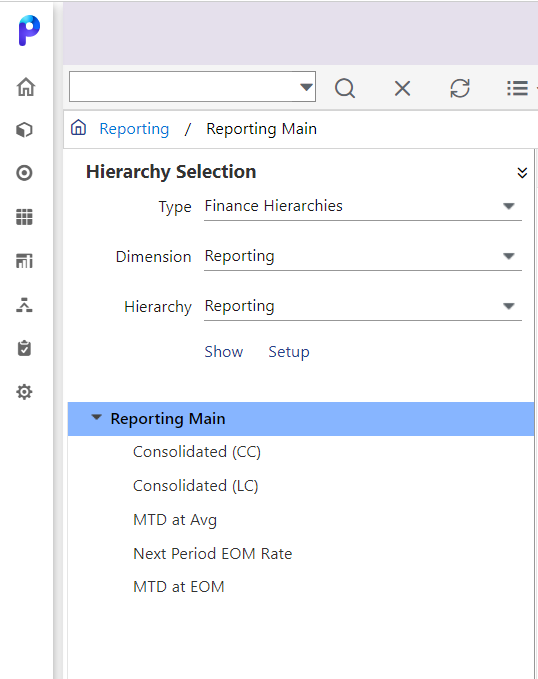
- Click Show.
- Select the hierarchy and click Add.
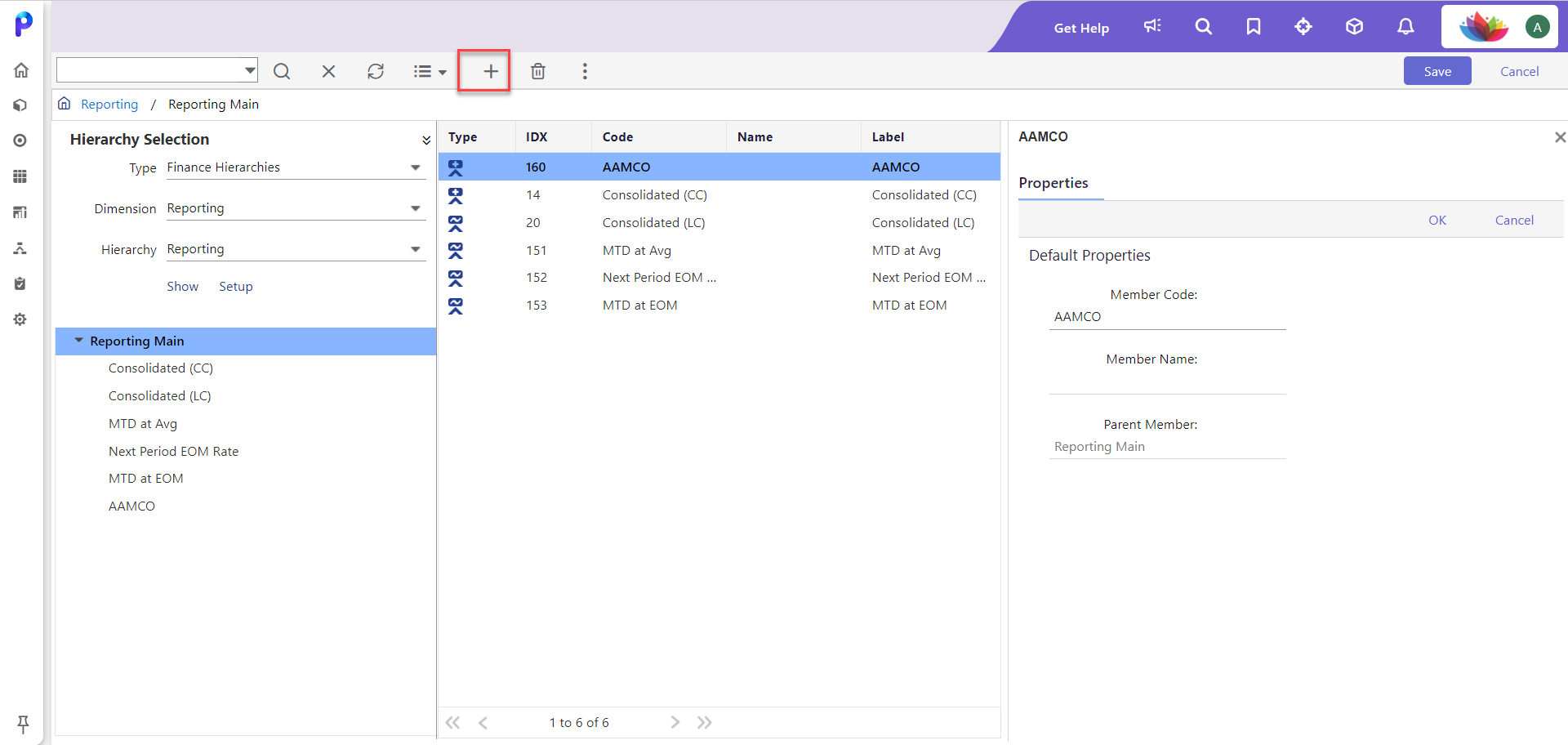
- Select Rollup Node and Rollup Member.
- Enter Member Name and Member Code and select segment properties.
.png)
- Double-click AAMCO in the hierarchy and click Add.
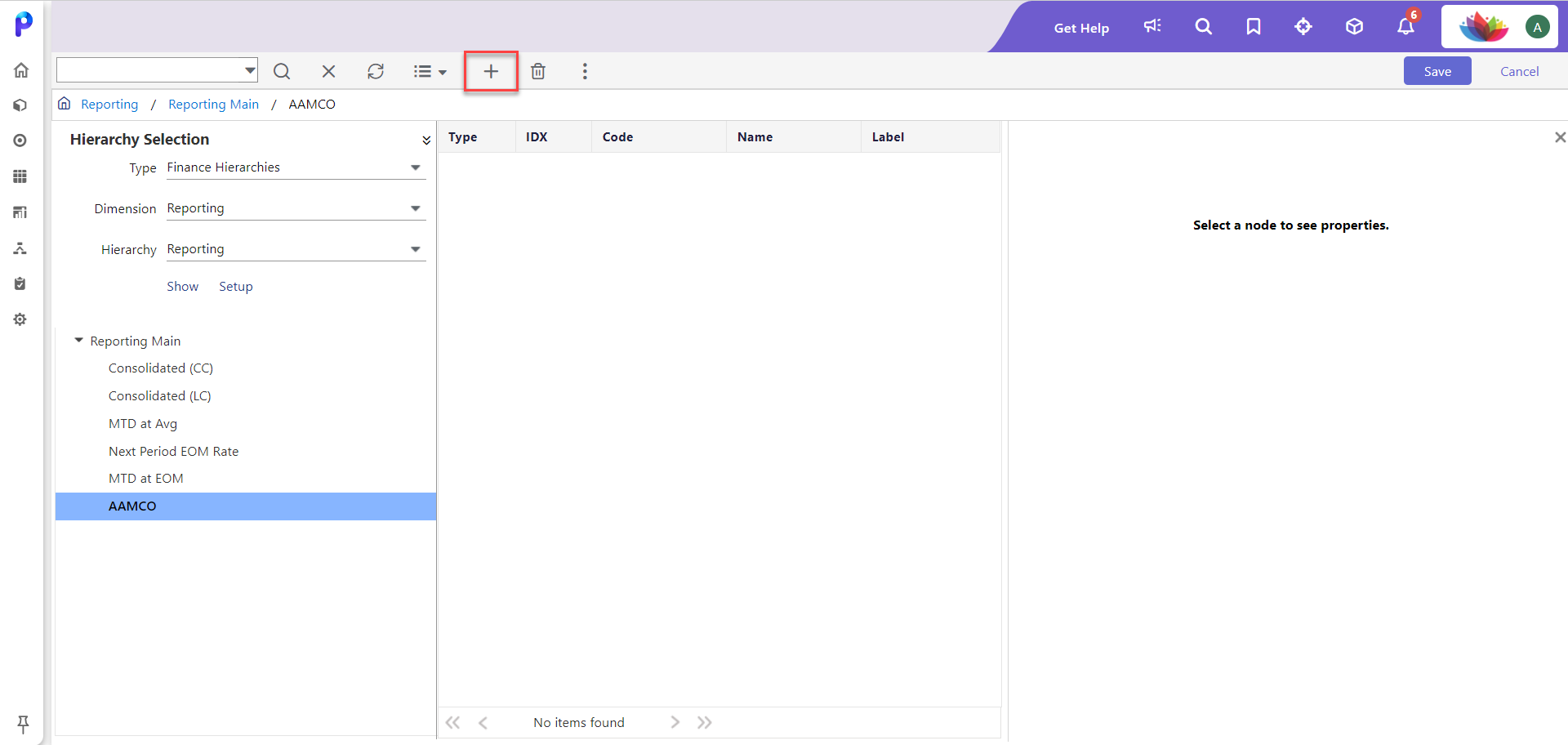
- Select Leaf Node - Leaf Member and click Add.

- Select the Currency Type.
- Select Yes for Currency Exception.
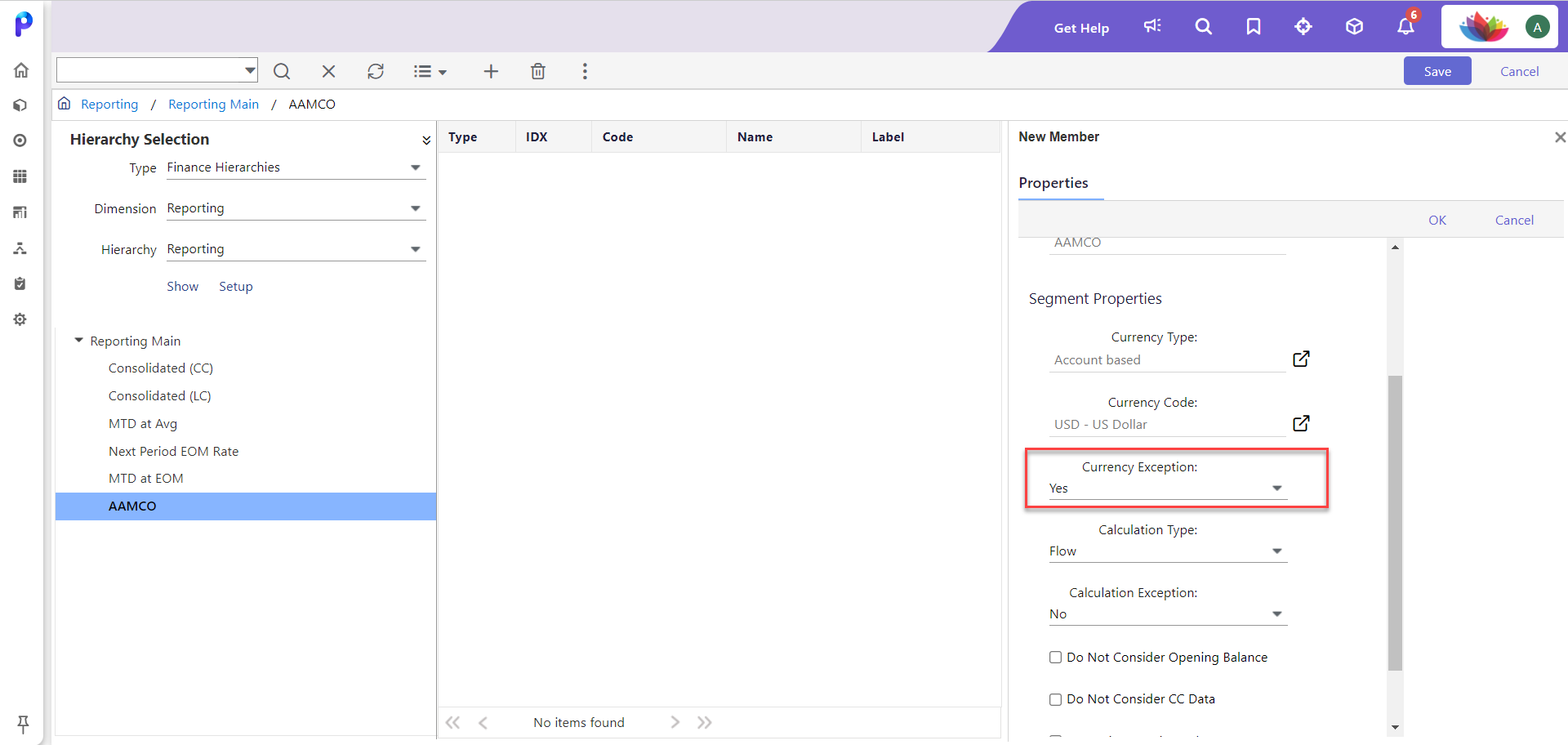
- Select values for Calculation Type and Calculation Exception. To learn more about segment properties, click here.
- Click Save.
- Access the Currency Exception page by navigating to Maintenance > Currency > Currency Exception.
- Select the AAMCO Reporting currency as shown below.
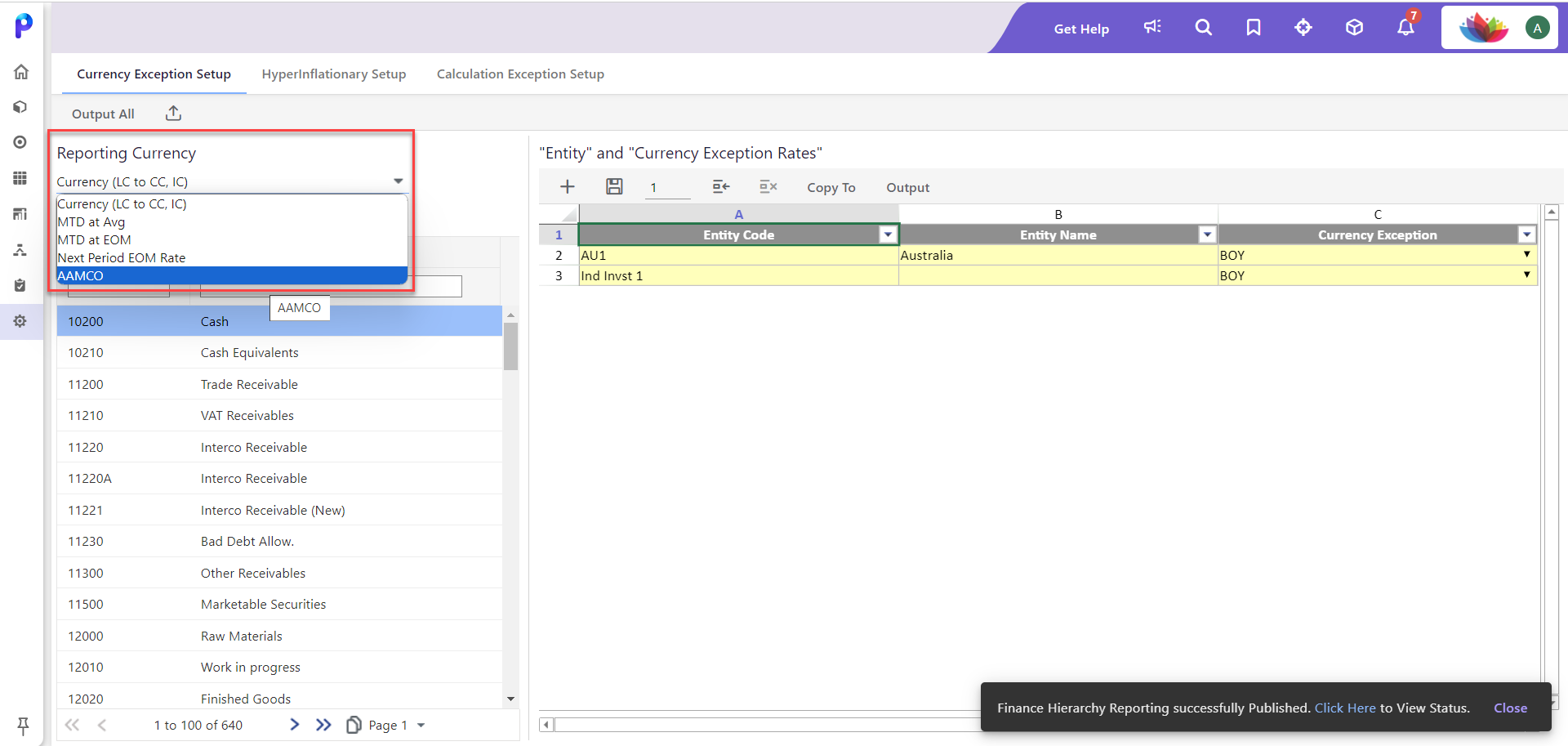
- Click Add. Select the company for which you want to define the exception and click Add.
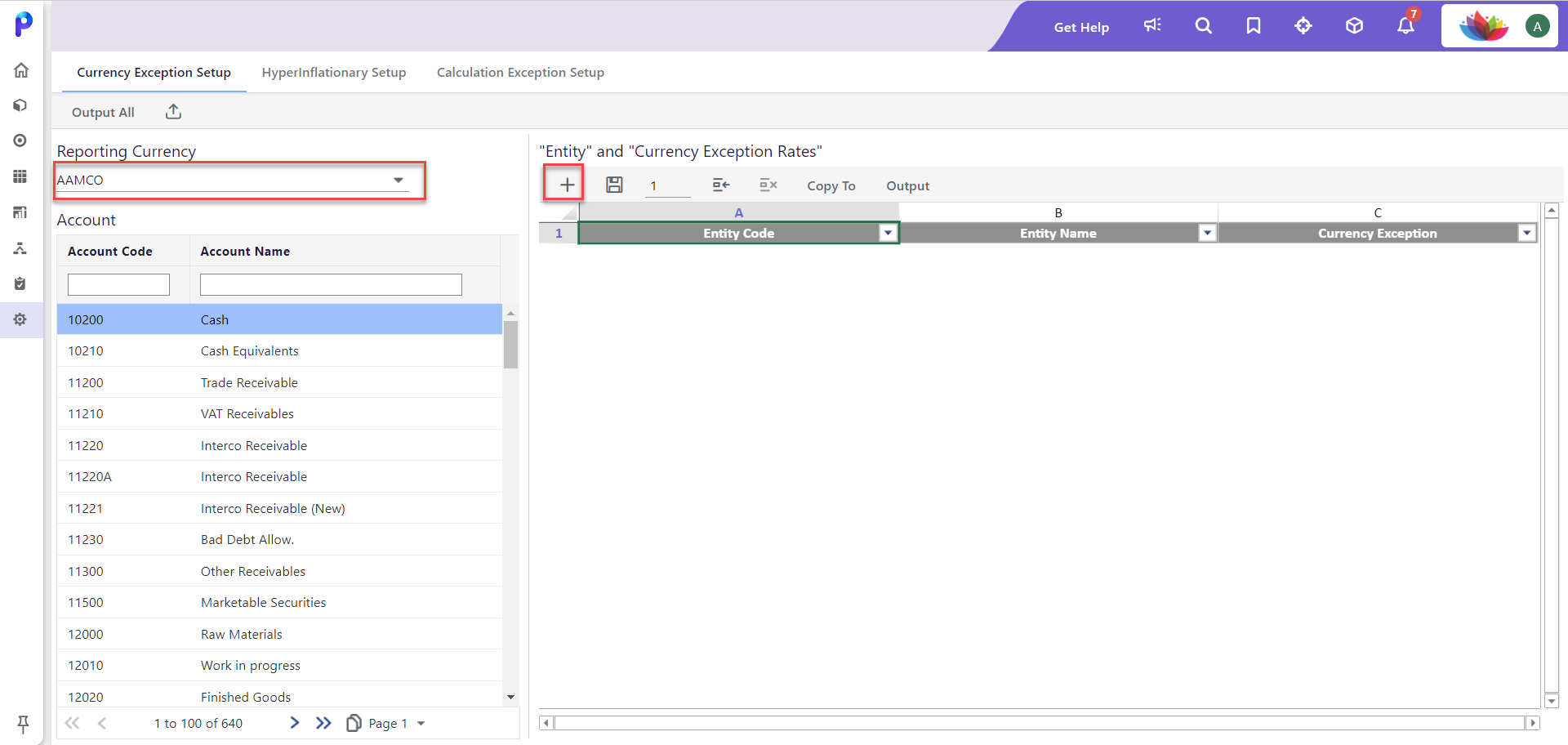
- Select the Currency Exception for the company from the dropdown.
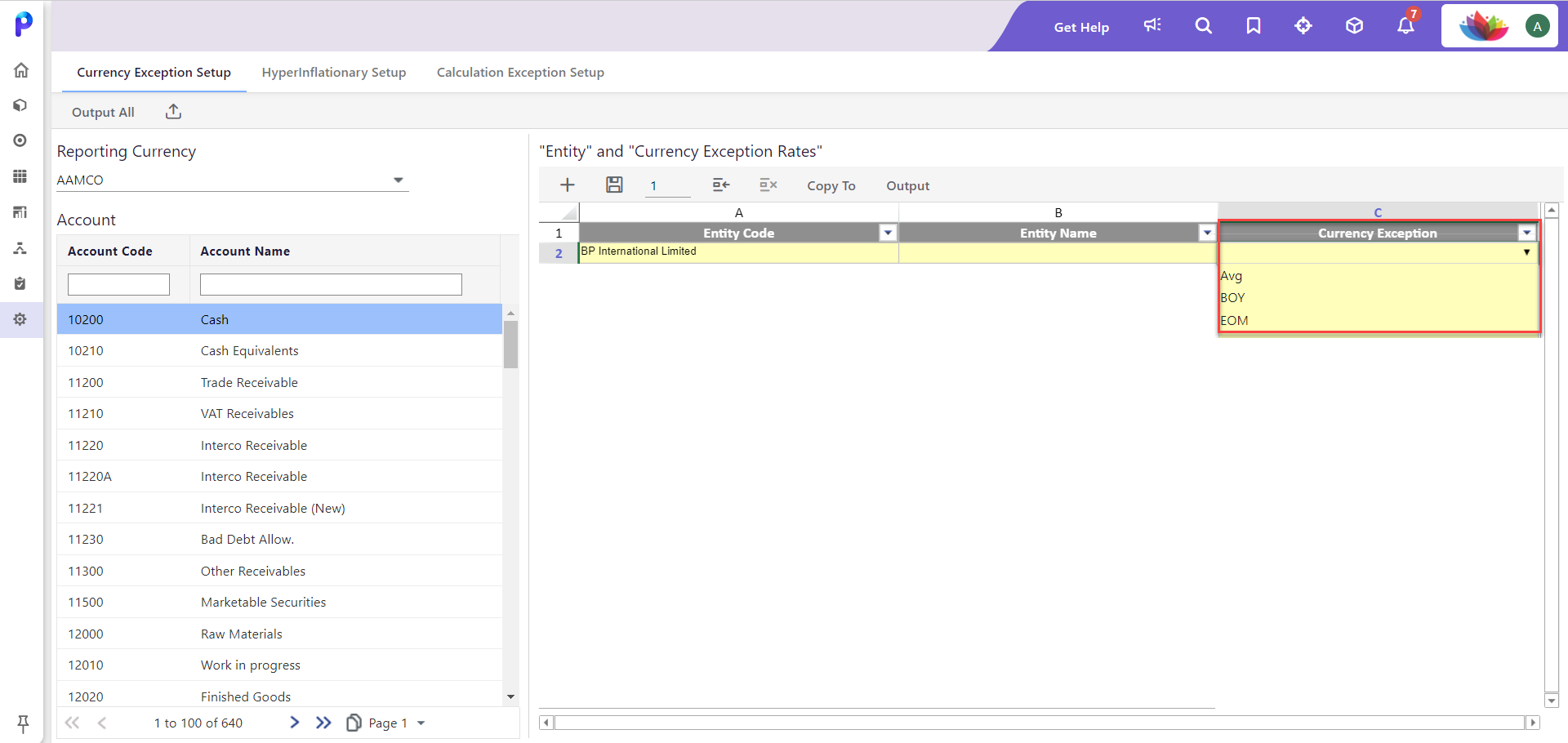
- Load Currency Exchange Rate to convert the currency as needed for a selected scenario and year.
- Run the Consolidation Process on that scenario to update all of the exchange rates. In reporting, select the new Reporting Currency (Currency). All P&L accounts will be translated.
.png)

